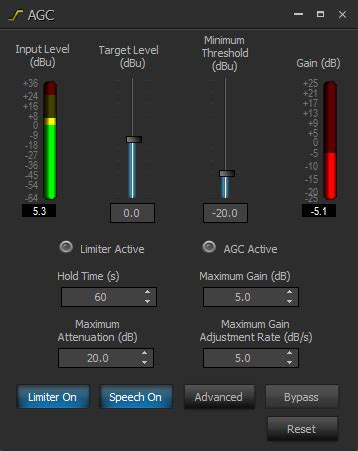Other Parts Discussed in Thread: TLV320AIC3204,
Tool/software: TI C/C++ Compiler
Hi All,
Greetings!
we are using TMS320C5505 DSP and TLV320AIC3204 CODEC for our development of audio application.
As per Datasheet already AGC has implemented in H/W now we have to
enable the parameters which belongs to AGC
1.Target Level
2.MAx.PGA gain
3.NOise threshold level
4.Attack time
5.Decay Time
On what reference, Codec is taking input (Amplitude or frequency or SNR or Voltage,
Current)
When AGC Noise Threshold is set to –70dB, –80dB, or –90dB, the microphone input Max PGA applicable setting
must be greater than or equal to 11.5dB, 21.5dB, or 31.5dB respectively.
But we want to allow the signal threshold level in between +20dB to +80 dB .
Is threshold Level Reference parameter is SNR or AMplitude because Noise Thresholdlevel is -30 t0 -90 dB which is negative values
How will get After AGC output level in between +20 dB to +80 dB(Human able can hear these level only)
Can you please help to achieve the above threshold level?
Thanks in Advance
Best Regards,
Charitha.



